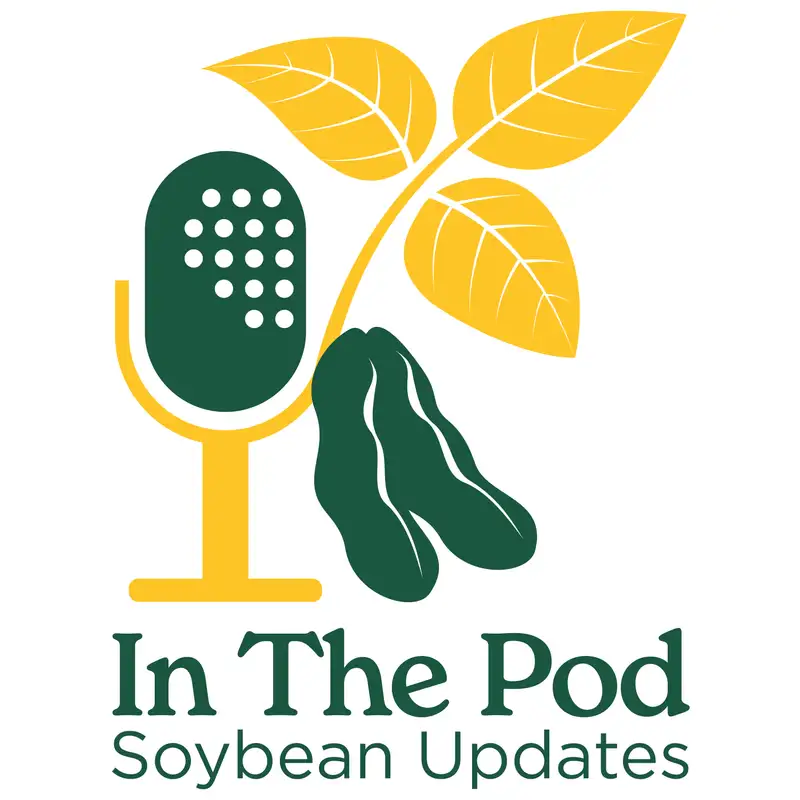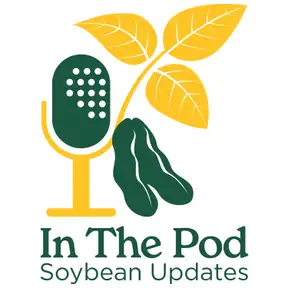07/24/25 High-Tech Spraying: What’s Next for Soybeans
You're listening to In The Pod, soybean updates, a weekly trek into the latest soybean information from NDSU Extension. Today, we're talking about sprayer technology. Being efficient with chemicals is cheaper and better for the environment. Our guest today is Rob Proulx, Extension Agriculture Technology Systems Specialist. Rob, let's talk a little bit about your role at NDSU Agriculture. What do you do?
Rob Proulx:Yes. So I am an Agriculture Technology Systems specialist with NDSU Extension. And what agricultural technology systems means is that my main focus areas are precision agriculture, sprayer systems, machinery systems. And as an extension specialist, I work directly with farmers and other agricultural folks, industry folks. I work with our agents to develop educational materials for our stakeholders.
Bruce Sundeen:How can sprayer technology help soybean farmers?
Rob Proulx:So one of the areas of focus since I've started in this position has been to educate farmers and others on Delta T, which is the meteorological variable that simply describes the dryness or the humidity of the atmosphere, and it that impacts herbicide applications. And it especially affects Liberty or glufosinate, which is a really important herbicide for soybean production. So trying to educate on that ideal range of Delta T values for spraying and how to mitigate if it's maybe marginal for spraying. And when that value gets high enough, what's the timing where you should should really pause on spraying, especially Liberty, you can make sure you still get good effectiveness, good efficacy out of your applications.
Bruce Sundeen:Is it difficult to teach others about Delta T?
Rob Proulx:It's something that people, I think, intuitively understood. People were generally used to watching temperature and relative humidity. The benefit of Delta T is that that number has the same meaning no matter what the temperature is, where relative humidity, the meaning of it changes depending on if it's cooler or warmer. So the delta t being a consistent number that always means the same thing is is a really helpful measurement.
Bruce Sundeen:Rob, what about See and Spray technology?
Rob Proulx:Yes. One of the other technologies that's out there is See and Spray or other similar types of sense and act spray technology. See and Spray is probably the best known, but there are a few other ones out there. You need a GPS equipped sprayer, and then there's cameras mounted along the booms. And then those cameras are continuously taking in a feed of imagery and detecting weeds in the field and then turning on the nozzles just if necessary.
Bruce Sundeen:Can you pre map your field and then spot spray weeds?
Rob Proulx:That is another possibility. There are a few private companies that offer that service, at least on a limited commercial basis. One of my colleagues here at NDSU in my department, Doctor. Pablo Flores is also working on that. He's done some work in the past on corn and on sugar beet, and he's starting a study this summer looking specifically at soybean and seeing if those methods can be adopted to soybean.
Bruce Sundeen:Rob, one of my favorite topics, drone spraying. How can this tech help soybean farmers?
Rob Proulx:Yes. So I have been presenting some educational information on drone spraying. That's something that's been requested of me. It's an industry that's growing in the state of North Dakota. There were 69,000 acres sprayed by drone last year. It's a small piece of the pie. There were 5,400,000 sprayed by big aircraft, but nonetheless, it's growing. Specific to soybean, I think where there perhaps is some potential to maybe do some, some targeted applications, maybe things like white mold control, where it doesn't typically happen over the same field and some of those fungicide products can be a little bit expensive. And we've had this idea where we could target these areas for quite a while now, but if you're operating with a full width sprayer to bring that out to the fields or just do a few patches doesn't necessarily make a lot of sense. So maybe this is a technology that can be used to do that sort of thing in in other types of targeted applications in soybean.
Bruce Sundeen:Thanks, Rob. Our guest has been Rob Proulx, extension agriculture technology systems specialist. You're listening to In the Pod, soybean updates, a weekly trek into the latest soybean information from NDSU Extension, supported by the North Dakota Soybean Council.

